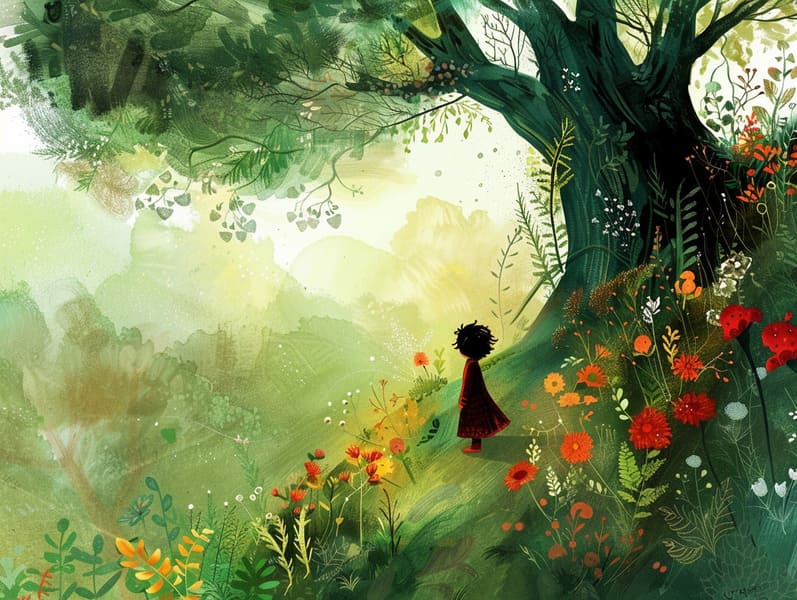
Old fairy tales have historical significance. These stories have been passed down from one generation to the next far before they were ever transcribed. They originated from a variety of cultures, including Asian traditions. They were initially shared among older generations, often carrying themes and messages concerning the societal norms and beliefs of the time.
The renowned Brothers Grimm, Jacob and Wilhelm Grimm, were among the first to compile many of these beloved stories. Their volume, "Grimm's Fairy Stories," included stories like "The True Bride," "The Bread Crumb Trail," and "Snow-White and Rose-Red," which have since become staples in the world of classic fairy tales. Similarly, Andersen's fantastical tales, such as "The Story of the Little Mermaid," and "The Duckling that Could," have stolen hearts worldwide, securing their place in the pantheon of beloved fairy tales.
Despite their historical roots, traditional fairy tales remain as important as ever, especially as children's bedtime stories. These enchanting tales are now available in diverse formats, including colorful picture books, delightful animations, and web-based fairy tales.
Their lasting appeal can be attributed to several fascinating points:
Valuable Lessons: Timeless fairy tales often provide important moral lessons. Stories like "The Story of the Boy Who Cried Wolf" teach the merit of integrity, while "The Tale of the Tortoise and the Hare" demonstrate the virtues of persistence and unpretentiousness. These stories offer young readers clear distinctions between truth and falsehood, guiding their moral compass in a subtle yet impactful way.
Compassion and Insight: Fairy tales frequently involve individuals facing trials and tribulations, motivating kids to resonate with their struggles and cheer for their triumphs. For instance, "Beauty's Beast" reveals the importance of looking deeper to see the real person of a person, strengthening kindness and perception.
Cultural Comprehension: Many ancient fairy tales are infused with the cultural contexts from which they developed. Delving into these narratives can provide captivating looks into different heritages, fostering a sense of world respect and discernment.
Fantasy and Innovation: The fantasy-filled elements in fairy tales—wizardry and magic—engender children’s innovations. These fairy tales bring readers to supernatural realms, kindling fantastical thinking and a sense of magic that remains a lifetime.
Timeless fairy tales are not only bewitching but also enlightening. They provide fantastical tools in nurturing various mind and heart abilities in young ones. popular fairy tales with morals When timeless fairy tales are recited, they enhance communication skills by showing new linguistic elements and sophisticated sentence structures. This practice also enhances auditory skills and attention, as children focus on every detail, expectant to see what happens next.
Furthermore, conversing about the themes and characters of fairy tales can strengthen cognitive skills and critical thinking. Kids are educated to discover patterns, anticipate outcomes, and make sense of cause and effect. These reflections also support children voice their thoughts and feelings, cultivating their emotional intelligence.
In today’s modern era, the prevalence of free fairy tales online has made these stories more accessible than ever. Web platforms and mobile apps offer extensive collections of children's fairy tales that can be viewed or listened to anytime, anywhere. Fairy tales spoken are particularly common, making available an captivating way for children to immerse in these enchanting tales. Spoken stories and read-out-loud videos guide characters and settings to life, often augmented by whimsical music and tunes that enrich the narrative experience.
The timeless appeal of ancient fairy tales lies in their ability to alter to today's world while sustaining their key morals. Contemporary modernizations of these fairy tales often bring in more inclusive characters and modern settings, making them understandable to today’s audience. However, the core values of valor, kindness, and fair play remain unchanged, continuing to connect with readers of all ages.
Ancient fairy tales also offer a sense of contentment and knowability. They present a structured narrative with a clear beginning, middle, and end, often closing with the solving of conflicts and the triumph of right over wrong. This foreseeability can be reassuring for little ones, granting a sense of steadiness in an unstable world.
Timeless fairy tales continue to fascinate and train new generations, maintaining their splendor and meaningfulness in modern society. As bedtime stories for kids, they grant access to a perfect blend of enchantment and education, nurturing moral values, empathy, and creativity. The existence of internet fairy tales and the well-received status of fairy tales recited assure that these classic narratives remain obtainable to new generations.
By upholding and broadcasting these stories, we continue to glorify the rich tapestry of storytelling and cultural heritage. Whether you are viewing a beautifully illustrated book, enjoying a virtual collection, or hearing an narrated book, the captivation of Grimm's fairy tales is always within reach. These narratives convey of the persistent spell of fairy tales and its ability to bind us across epochs and places.
Even if you are exploring a richly illustrated book, enjoying a cyber library, or listening through an read-aloud book, the loveliness of timeless fairy tales is always within reach.
These tales demonstrate of the unceasing force of stories and its ability to unify us across time and space, forging a link that fascinates and enlightens alike.